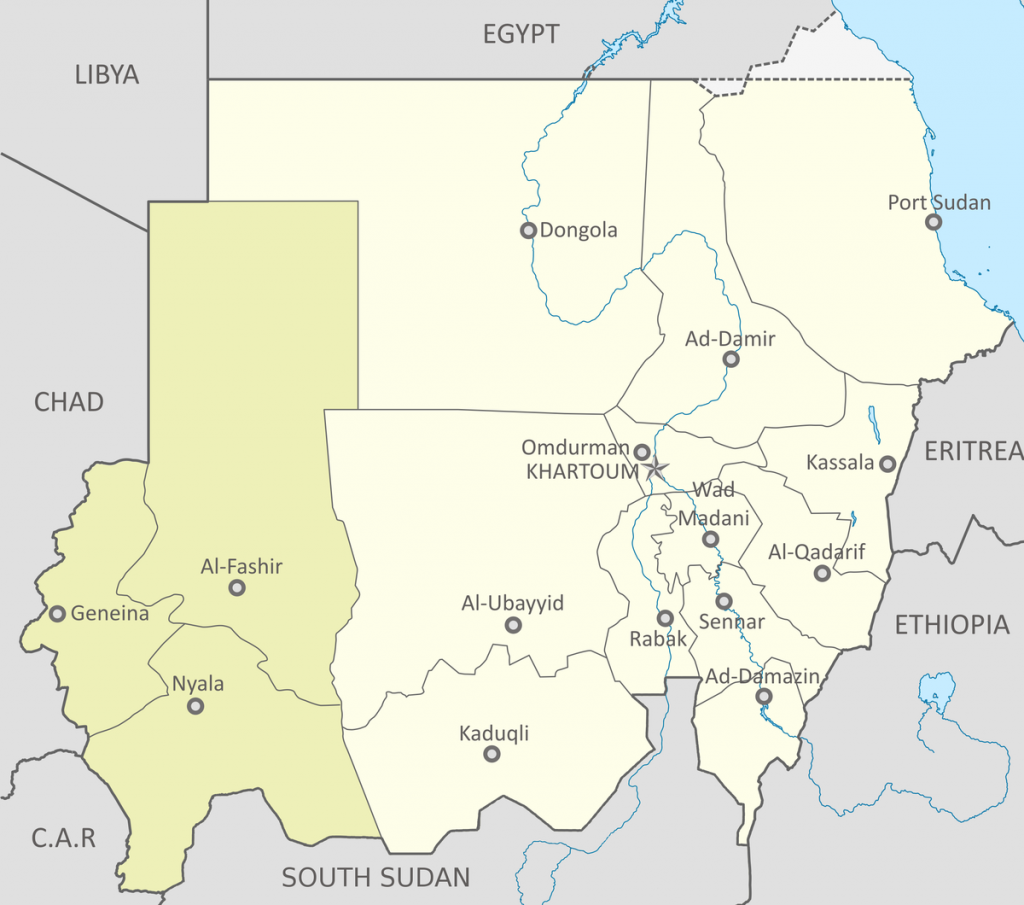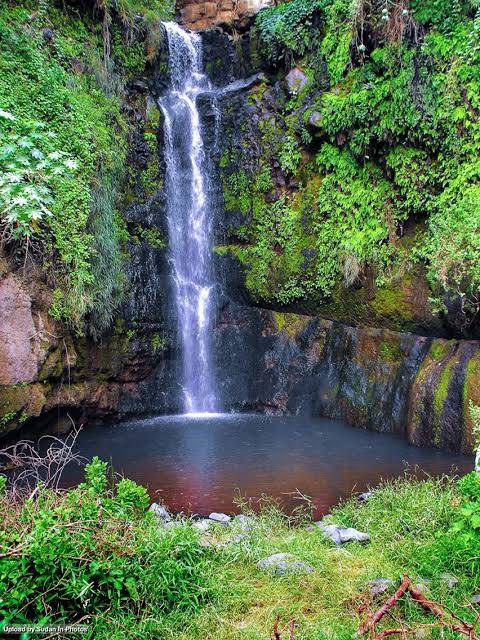About Darfur

The United Nations has described Sudan’s western Darfur region as one of the world’s worst humanitarian crises. More than 2.3 million people have been displaced, most of them living in squalid camps in Darfur and neighbouring Chad. Peacekeepers and aid workers have restricted access to those in need.

The conflict flared in 2003 when rebels in Darfur took up arms, accusing the government of neglecting the region. The government responded with a counter-insurgency campaign. Since then, civilians have come under attack from government troops, pro-government militia and rebel groups. Arab militias are also fighting each other, and there are frequent clashes between tribes. Levels of violence fell after 2005, but have risen since the start of 2013. Nearly 400,000 people were displaced in the first half of 2014 alone.
Details
Levels of violence fell after 2005, but have risen since the start of 2013. Nearly 400,000 people were displaced in the first half of 2014 alone. he conflict in west Sudan’s Darfur region flared in 2003 when two rebel groups rose up against the government, accusing it of wilful neglect. Khartoum moved swiftly to crush the revolt by the Justice and Equality Movement (JEM) and the Sudan Liberation Army (SLA). The conflict spilt over into neighbouring Chad and Central African Republic. The Sudanese government is widely accused of arming militias drawn from Arab tribes who have used scorched-earth tactics against the rebels’ communities. Khartoum has denied the accusations. In March 2009, the International Criminal Court (ICC) issued an arrest warrant for Sudanese President Omar Hassan al-Bashir for war crimes and crimes against humanity in Darfur, describing the Janjaweed as allies of the Sudanese armed forces. Bashir has dismissed the charges. Soon afterwards the government expelled 13 international agencies from Sudan and three local agencies from Darfur. In 2009, the outgoing military commander of U.N. peacekeepers said the conflict was effectively over, and isolated attacks and banditry were the region’s main problems. But fighting escalated in 2010, forcing tens of thousands more to flee their homes. In 2010, the ICC issued a second arrest warrant for Bashir, this time for charges of genocide. The number of people killed in the conflict in Darfur is hard to determine. The United Nations says as many as 300,000 may have died since 2003. Khartoum puts the figure closer to 10,000. Many villages have been destroyed and hundreds of thousands of people have fled the violence and are in squalid camps in Darfur and neighbouring Chad. Some 2 million people are still displaced, having fled their homes at the height of the conflict between 2003 and 2005. International Crisis Group says the removal of so many people from their homes has been part of a government policy of ethnic cleansing, in a bid to cripple support for the rebel movements. The displaced are mostly African farmers from the Fur, Zaghawa and Massaleit tribes. A growing number of people from Arab tribes are also being displaced. The Janjaweed come from Arabic-speaking pastoralist communities, which herd camels in northern Darfur and cattle in southern Darfur. Some who fought for pro-government militia have since joined the rebels. Both the farmers and the pastoralists are Muslim, and have inter-married for centuries. The Zaghawa are also camel herders and have strong ties to Chad.
Social Groups
The Society of Darfur is very diverse. The Fur, largely peasant farmers, occupy the central belt of the region, including the Jebel Marra massif, the richest and most stable area in terms of soil fertility and water resources. Also in this central zone are the non-Arab Masalit, Berti, Bargu, Bergid, Tama and Tunjur peoples, who are all sedentary farmers. The northernmost zone is Dar Zaghawa, part of the Libyan Sahara, and inhabited by camel nomads: principally the Zaghawa and Bedeyat, who are non-Arab in origin, and the Arab Mahariya, Irayqat, Mahamid and Beni Hussein. It is the most ecologically fragile of the three main zones and most acutely affected by drought. Its occupants have frequently been active in armed conflicts in the region – either against settled farmers or amongst themselves – amid growing competition for access to water and pasture. Cattle rather than camels are herded by the Arab nomads of the eastern and southern zone of Darfur, who comprise the Rezeigat, Habbaniya, Beni Halba, Taaisha and Maaliyya. The area is less severely affected by drought than the northern zone, although still highly sensitive to fluctuations in rainfall and less ecologically stable than the central zone. In addition to the distinction between cattle and camel herders on the one hand and settled farmers on the other, there is a significant urban population of traders, government officials and other professionals. Armed raids on rich agricultural areas and skirmishes with rival groups are part of the historical way of life for the nomadic herders, and constitute a survival strategy in the face of natural calamity and threatened destitution, enabling the maintenance of their social fabric. While the Fur and other cultivators did not traditionally have the same degree of military organisation, their relations with the nomads alternated between negotiation and hostility over the intrusion of nomads’ herds on to farming land.
Culture
Darfur is Divided into three states, Shamal Darfur (North Darfur), Janub Darfur (South Darfur), and Gharab Darfur (West Darfur), Darfur, meaning (land of the Fur), is home to between forty and ninety tribes. Tribes are composed of extended families, predominantly of one ethnic group. A tribe may also include relatives of tribe members, visitors from neighboring villages, guests, and Faki, teachers of the Koran. The current conflict divides the numerous tribes of the region into Non-Arab and Arab. Non-Arab tribes are comprised of indigenous, black African people, while Arab tribes claim descendency from the Middle-East, tracing their genealogy back to the Prophet Mohammed. Non-Arab tribes in Darfur are largely settled farmers (who own livestock), and include the Fur (located traditionally in Central and East Darfur), the Zaghawa (Shamal Darfur/Chad), and the Masalit (Gharab Darfur/Chad). Arab tribes are predominantly nomadic pastoralists1 , and include the Sharafa (South Darfur), the Rizeigat (Southeast Darfur), and the Taisha (South Darfur). Though individuals from Shamal, Janub, and Gharab Darfur were interviewed for this article, three individuals were from the Zaghawa tribe, one was from the Masalit tribe, and the fifth was from the Sharafa tribe, an Arab tribe of South Darfur. Communication, both between individuals and at the tribal level, has long served as the foundation of conflict-resolution in Darfur. Thus, it is only fitting that language is a particularly important aspect of Darfurian culture. Both Arab and non-Arab Darfurians speak Arabic, while non-Arab Darfurians also speak the language of their tribe. Though there are some initiatives currently being undertaken to create scripts for tribal languages, particularly among the Masalit, tribal languages, named after specific tribes, follow an oral tradition, and do not have their own scripts. Traditionally, when conflicts arise, meetings between omdas2 or sheikhs3 take place. These negotiations are held almost always in tribal languages, unless the conflict has occurred among different tribes, in which case Arabic serves as a common language. The Sudanese government’s (Arabization) policy affected tribal languages in certain parts of Darfur severely. The Zaghawa of El Dain province, an area of eastern Darfur dominated by Arabs, no longer speak the Zaghawa language due to generations of forced communication in Arabic. Similarly, in other areas of Darfur, school children were only allowed to speak Arabic in school, and were beaten or verbally accosted by their teachers if they spoke a tribal language. There are also several instances of adults being bullied, taunted, or physically harmed on the street because ardent followers of (Arabization) heard them speaking tribal languages